NatureZen: Birds With Snacks (Part 2)
words and photos by Melissa McMasters
Last year at this time, inspired by the piles of baked goods strewn around our office, I wrote about what some of the birds in our area like to eat in the winter. It seems like as good a time as any to introduce a new holiday tradition, so today we’re bringing you Birds With Snacks: The Sequel!
Our four-course meal starts light, with seeds and nuts. A familiar bird that eats nothing but seeds is the American goldfinch. They make clever use of all parts of the seeds of thistle plants, eating the actual meat of the seed and using the down that carries it on the wind to line their nests. (Funny that a plant we think of as poky is such a source of softness for a bird!) Many of us buy “thistle seed” to feed finches in our yards, but this is actually a seed called Nyjer that comes from a different plant in the sunflower family. It’s imported from Ethiopia and India and has a high oil content like black-oil sunflower seeds, but in a compact package that’s perfect for feeding to nestlings.
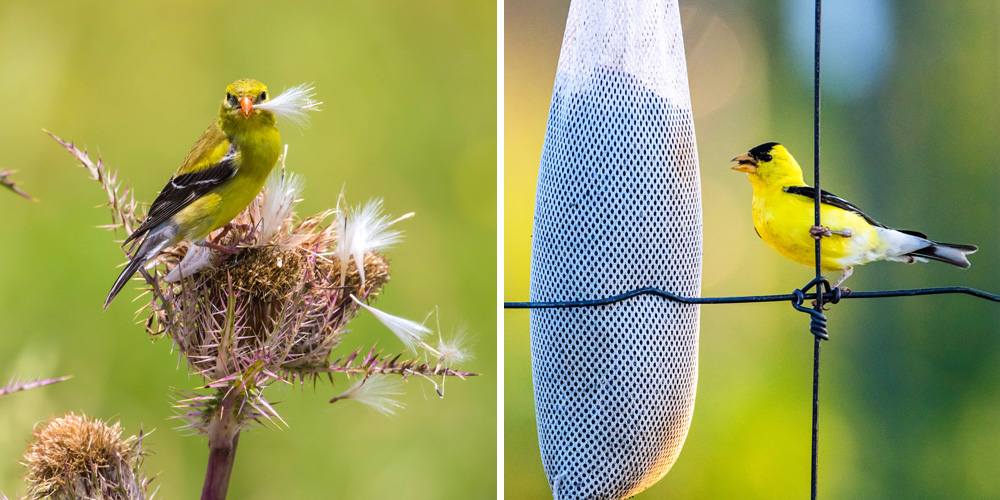
Some birds–mainly corvids and woodpeckers, but also some smaller birds like nuthatches and chickadees–have a habit of collecting seeds and caching them for later use. The seed-saving behavior of the Clark’s nutcracker is entirely responsible for the germination of a particular pine tree. These birds use their sharply pointed bills to break open the cones of whitebark pines (which, unlike other pines, don’t open on their own), stuffing more than 100 seeds at a time under their tongues. But they don’t need all this food in the moment; instead, they fly around and bury four or five seeds at a time in different locations so they’ll have something to eat during the winter. The seeds that they forget or just never get around to can grow into new trees, perpetuating the life cycle of both bird and plant.
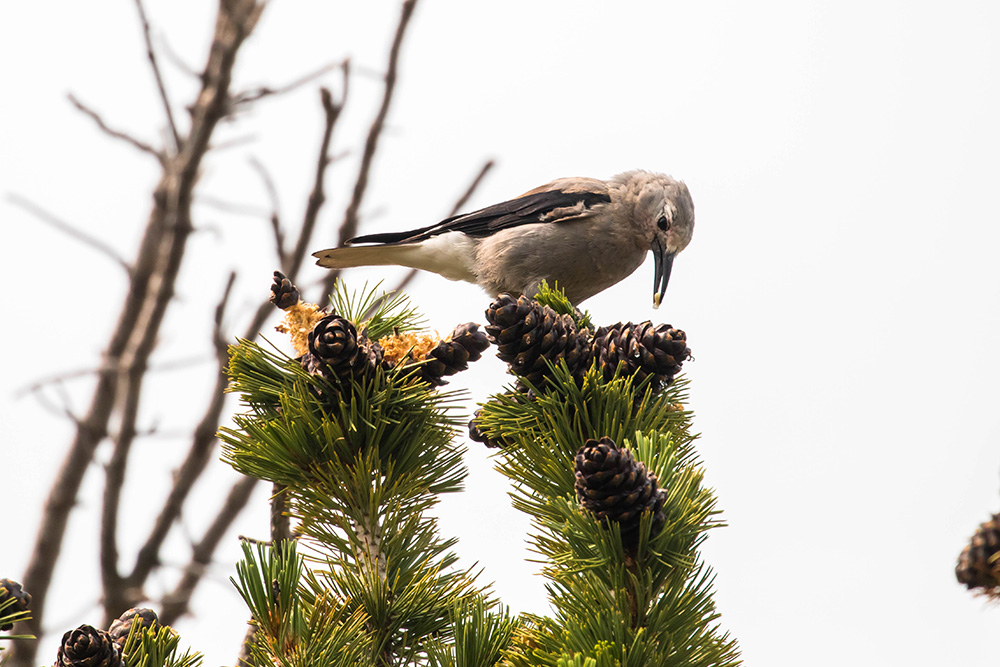
Oak trees similarly have members of the corvid family to thank for helping them greatly expand their range. Blue jays carry acorns up to 2.5 miles away from their source (the furthest of any bird), burying them underground at an ideal depth for germination. This wide radius can help new oaks to grow in areas less affected by things like fungal disease, catastrophic weather events, and insect infestations than their parent tree. In one monthlong research study, blue jays buried over 100 acorns per day, and they were good at choosing nuts with little damage from disease or insects. Their “hit rate” for finding viable acorns is close to 90%, which means that most of the acorns they plant and forget have a good chance at becoming trees.
California scrub-jays are highly intelligent stockpilers, aware that other birds might be watching them as they hide their food. They use shadows and objects to obscure themselves while caching, and if they think they’ve been seen, they’ll wait until their Peeping Tom has left and re-cache that food elsewhere! Best of all, researchers found that “paranoid” birds that engage in re-caching behavior were likelier to be thieves themselves. Takes one to know one, I suppose!
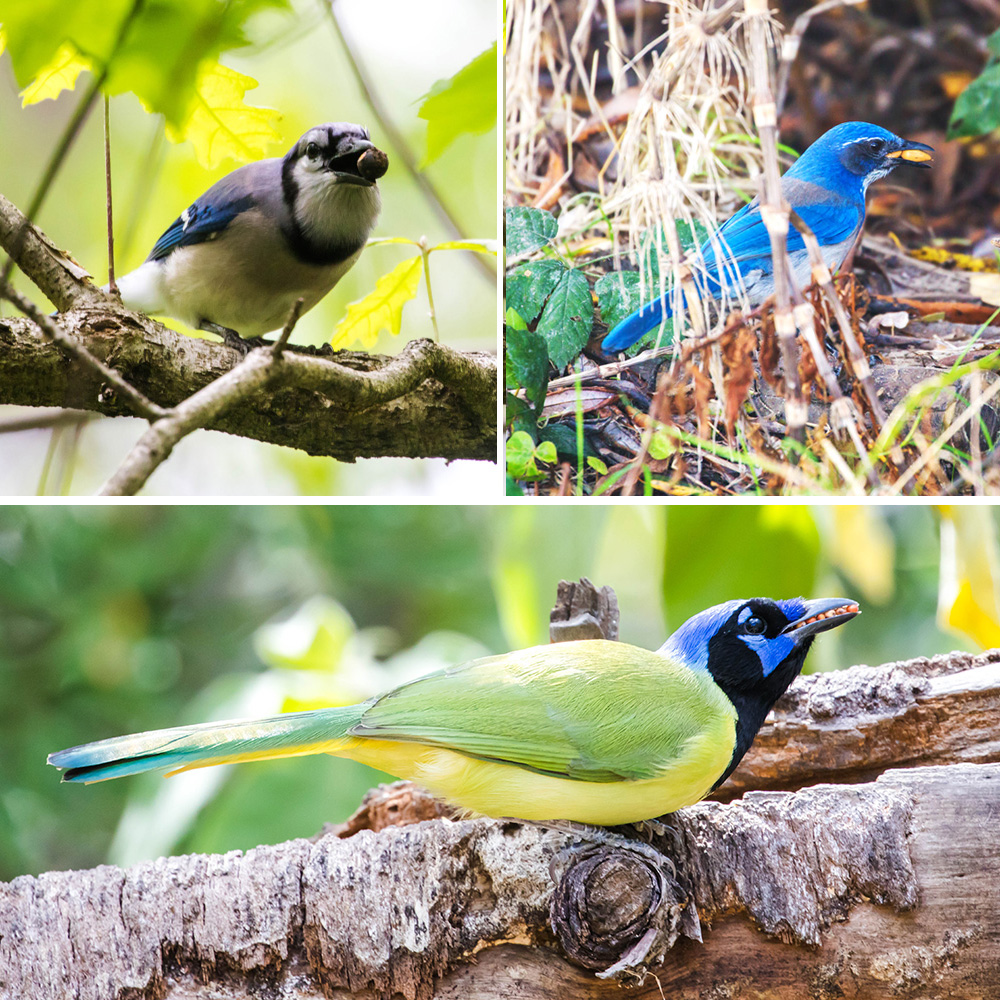
Woodpecker caching behavior doesn’t have the same wide-ranging ecosystem benefits that corvid caching does, for one simple reason: woodpeckers generally don’t bury their prizes in the ground. Instead, they look for cracks and crevices in trees to store nuts, seeds, and even insects. Acorn woodpeckers dig small holes in trees and store the nuts one by one, keeping them dry and making it hard for squirrels to pry them out. They’ve been known to get tens of thousands of acorns into one redwood tree!
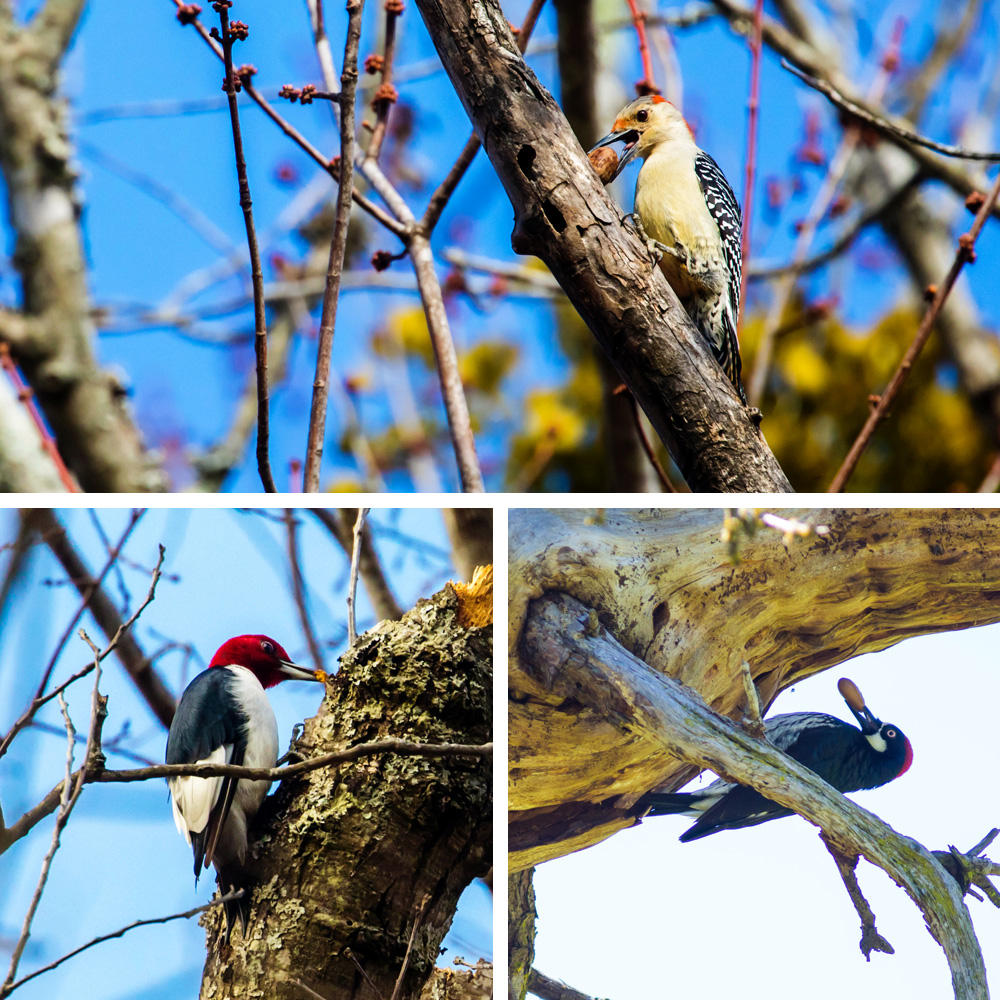
Now on to the protein! More than 6,000 of the world’s 10,700 known bird species depend in part on insects to survive. Scientists recently estimated that birds eat 400-500 million metric tons of insects every year (the energy equivalent of that used by all the people in New York City). It’s no wonder that ornithologists worry that the decline in insect populations, which is estimated at a rate of 1-2% per year, is having a domino effect on birds. Adult birds are nourished by all kinds of insects, but soft-bodied caterpillars are a particularly important food for baby birds that can’t yet elegantly separate a dragonfly from its wings.
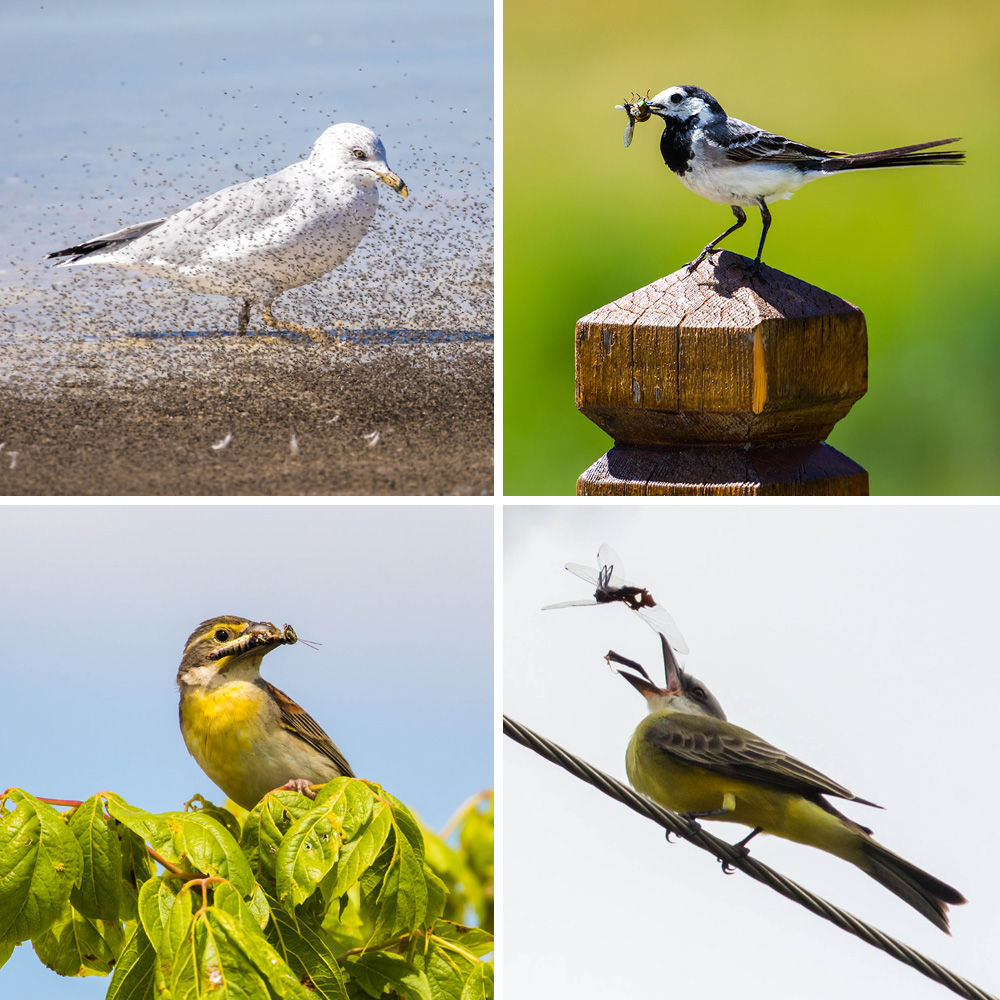
We’ve got pescatarians in our midst, too, and these birds employ several different methods to catch fish. Ospreys and eagles will swoop down and grab fish with their talons, carrying them back to a perch to eat. Belted kingfishers perch near water, or hover above it, and then dive in headfirst to catch fish near the surface. Green herons, which have feathers that make them blend into the background on the shores of freshwater lakes and ponds, stretch out over the water and pounce on their prey. (They’re actually so clever that they use pieces of twigs, feathers, and insects as lures for the fish! Here’s a video of one fishing with bread.) Forster’s terns, like kingfishers, will plunge-dive to catch fish, sometimes rocketing to the water from up to 50 feet in the air.
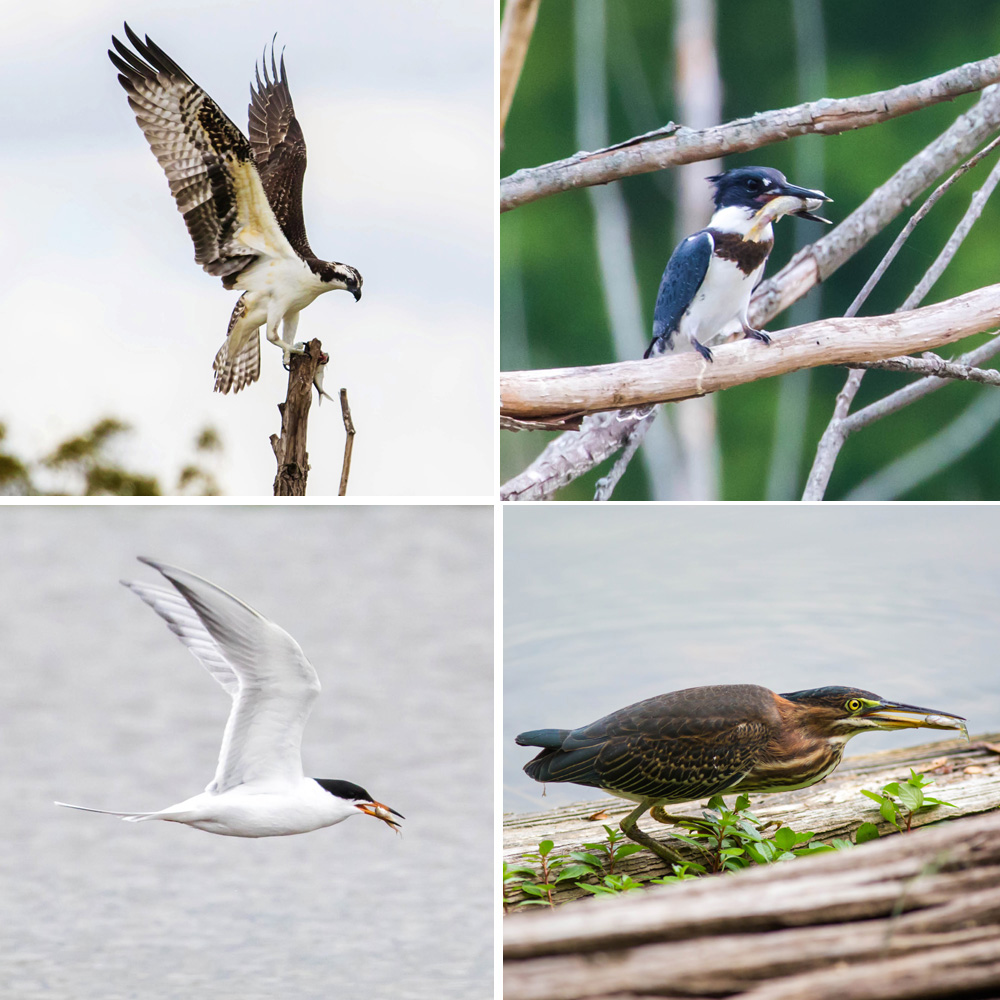
Ready for a palate cleanser? Plants that bear soft fruits depend on birds to reproduce, just as oaks and pines do. In the case of berries, the birds digest them and pass them back onto the ground through their waste. (Or, you know, they miss and hit your windshield. Probably not much help to the tree in that case, but Car Wash USA is undoubtedly a fan.) Many berry-producing plants have evolved bright colors and pleasant smells in order to attract attention from birds. And most birds don’t specialize; because fruit availability can vary widely from season to season, they need to be able to eat several different kinds in order to have the best chance at survival.
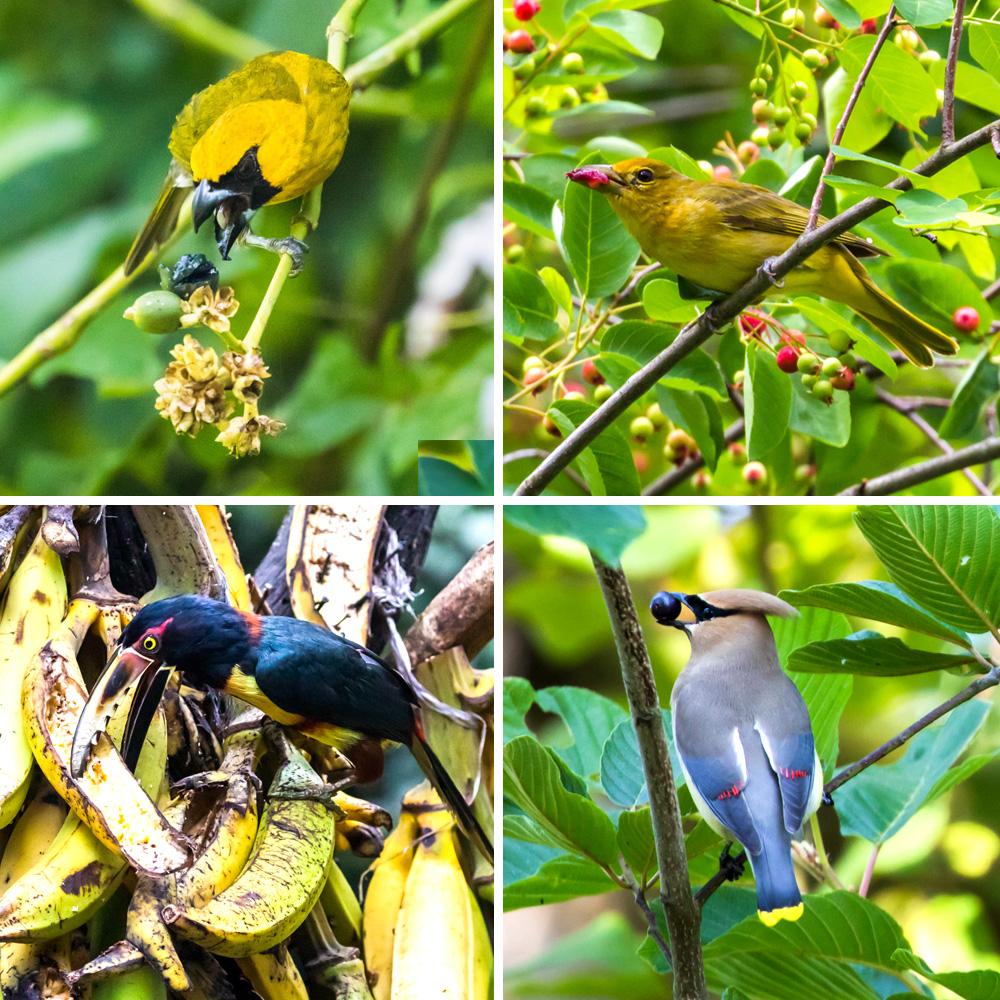
And now for dessert (which you should not intentionally feed to birds!). The house sparrow is an introduced species native to Eurasia and North Africa that evolved to live very closely alongside humans. Scientists have found that urban house sparrows have two genes that help them eat and digest starchy grains, and that these evolved on the same timeline as human agriculture. (Domesticated dogs followed a similar trajectory.) Because they can eat what we can, they follow us around…and clean up the cookies we drop on the sidewalk.
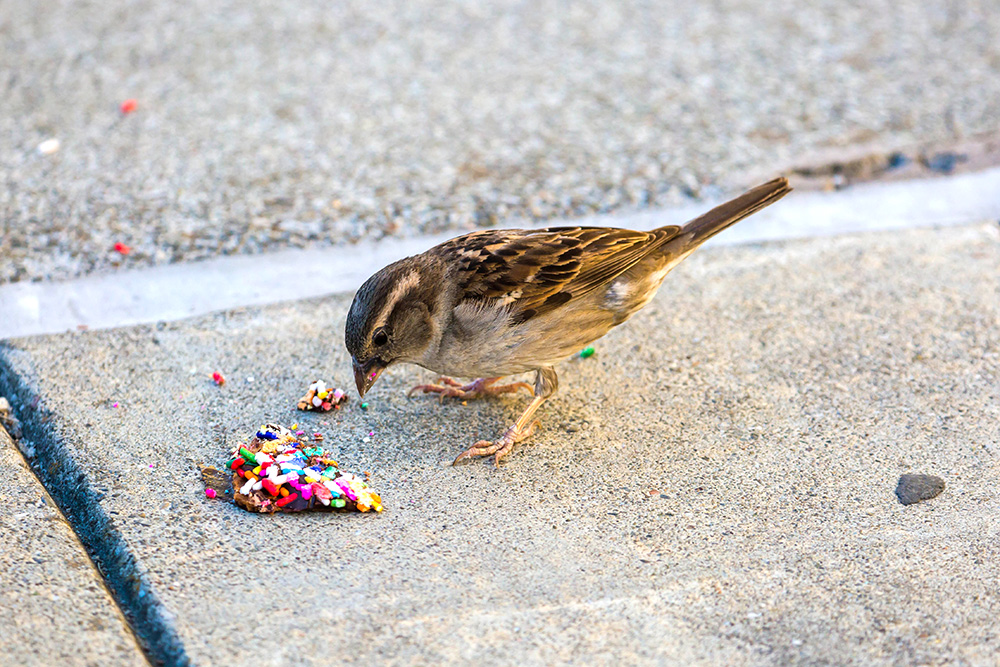
Can’t wait to see what birds we can find snacking throughout the new year!



